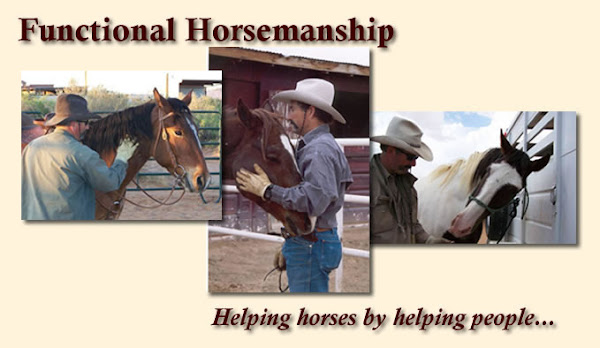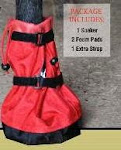Justin wrote to ask
"Thanks for writing the information and videos. They help me fine. What exactly is meant by a horse being halter broke. I am looking on classified ads for horses and I see ads saying the horse for sale is halter broke."
One of the first things you notice Justin, is that the more people and horses you are around, the greater the differences you'll see in
definitions. We all make fun how people use terms to describe their horses, especially if they are selling them. But the term "halter broke" certainly competes with them all for the widest description. The bottom line and the best circumstance for an ad describing a horse as halter broke, is that it is a very green horse, it is not gentled to ride.
But your question brings up a good topic - what is halter broke? While fueling up last year in late winter, I ran into a rancher I knew from my Range Rider days when I worked a gather in the grazing unit he leased from the BLM. He told me he had several horses who needed to be halter broke so when he brought cowboys in at springtime, they could ride and gentle them. Apparently the person who previous halter broke his horses had moved on. He said he pay me $100, $20 more than he paid the women, to halter break four horses, ranging from coming 2 to 4 years old, which pretty much told me his idea halter broke was pretty much just getting, and leaving, a halter on the horse.
While I had to think about it. I thought maybe I could show him a good way, and make it easier on the horses when some young men got ahold of them in a few months, but I had to say no.....I now wish I would have asked him what he expected from those horses once "halter broke", but I'm pretty sure his idea halter broke was pretty much just getting, and likely leaving, a halter on the horse.
If I would have taken up his offer, I would have planned to spend a couple days with these horses, getting them used to a halter going on and coming off, accepting a rope or a lead touching them all over especially on their backs, legs and hocks, and under their barrel. Then progressing to leading. I just can't associate being halter broke without being broke to lead.
One of the first things I do when the horse is accepting of the halter is to get it used to giving to pressure on the poll (behind the head). The pictures at left are me applying a little downward pressure on the halter heel knot with my left hand and using my right hand to put a little downward pressure on the poll. I'm not applying a lot of pressure, just giving a suggestion to the horse. Once the horse gives me anything (dropping his head), I release that pressure and give him a moment or two to think about it. Then I'll try it again.
Each time, if your release is exact and complete, the horse will give you more (drop his head more) and they'll be quicker about it too. This is teaching him pressure and release which is going to be the basis for you continuing on to gentle him to lead in hand - that is leading him on the ground by a lead rope connected to his halter.
Progressing to actually leading starts with giving to pressure from the lead line, I first start out asking a horse to give to off line pressure and giving me a step. By off line I mean you are of to the side of their head, then taking the slack out of the lead and having them give me a step. When they are good with this pressure from the front and having them get soft and giving you a couple steps at a time is good progress. If you can get all this down on a green horse, then I think you can move on to actually leading, but I wouldn't call it broke to lead until the horse can lead up properly without being pushy or invading your space. He should stop when you stop and still be paying attention to you. I think broke to lead would also include having a horse follow the lead so you can direct him past you which comes in handy loading in a trailer or going through a narrow gate.
Just because I get a halter on a dead broke horse, I don't take him having basic manners nor believe that leading up right foremost in his mind. When I get a halter on a horse, I pretty much always get them to give to poll pressure, not lead off until I'm ready, disengage the front end then the back Then I'll usually ask the horse to back. I have the horse lead off a few steps then have them stop. I pay attention to them giving me attention, and if they get distracted, I'll gently remind them to give me both eyes.
I have heard professional clinicians say that "if you can't load your horse in a trailer, then he ain't broke to lead". I not going to argue with my betters, but I am sure there are horses functionally broke to lead well enough that still have problems loading, but you can't get to trailer loading until the horse is halter broke and that means broke to lead safely.






















